Summary :
- Format Mac Drive For Windows
- Flash Drive Format For Mac
- Format Flash Drive For Mac Large Files Download
- Format Flash Drive Mac Fat32
- Format Hard Drive For Mac And Pc
When you get a new USB drive and want to format it, you may wonder: what is the best format for USB drive? Well, the best format for USB drive is different for different operating systems and devices. This article will show you how to choose the best format for USB flash drive.
Quick Navigation :
Nowadays, USB flash drive is widely used on various electronic devices due to its portability. Before you use a new USB drive, you need to first format it. Well, what is the best format for USB drive? How to choose the best format for USB drive?
Before you try to choose the best format for your USB drive, you need to know what file system it is in.
What Is File System?
What is file system?
In computing, a file system or filesystem controls how data is stored and retrieved. With a file system, the information placed in a storage medium will be separated into pieces and each piece will have a name, so the information is easily isolated and identified this way. Each group of data is called a file.
File system is the structure and logic rules used to manage groups of information.
I picked up an 8gb SD card from Target for $9 this weekend to easily transfer files between my Windows/Mac partition. However, I was disappointed to find that the stock filesystem, MS-DOS (FAT), does not support transferring large files. Would it be possible to format it in a way that they. That’s how format flash drive on Mac to FAT32 file system using terminal command line works. No doubt, it is a little bit complex for users who aren’t much familiar with the command line. That’s why this method is recommended for those who know how to use the terminal on Mac.
File systems can be used on a numerous variety of storage devices and media types. There are many different types of file systems; each of them has different storage devices that they are the most suitable for.
What is the best format for USB drive? Well, it depends on how you plan to use your USB drive.
How to Choose the Best Format for USB drive
Basically, to choose the best format for USB flash drive. The two most important things you need to consider are the operating systems you plan to use it with and the sizes of the files that you are most likely to transfer and store.
The following contents list some commonly used file systems. To better understand which one is the best file system for USB drive according to your needs, you can view the compatibility, pros and cons of these file systems one by one.
When you get a new USB drive, you can follow this guide to choose the best thumb drive file system for your portable drive.
NTFS vs HFS+ vs FAT32 vs exFAT vs Ext 2,3,4
1. NTFS: The New Technology File System (NTFS), a proprietary journaling file system developed by Microsoft, is the default file system of the Windows NT family.
- Compatibility: Windows XP/7/8/10, Linux (read-only for some distributions), MacOS(read-only), Xbox One
- Pros: journaling, no realistic file size limitations; support for file compression, high security
- Cons: can be read-only for Mac OS, or be written by Mac with the help of third-party software
2. HFS+: The Hierarchical File System (HFS+) is the file system modern MacOS versions use by default. If you want to use your USB drive on Mac devices, you can format USB to HFS+.
- Compatibility: MacOS, Linux(readonly), Xbox 360/One
- Pros: journaling, encrypt or compress files or folders
- Cons: cannot be read by the Window unless using third-party software
3. FAT32: The File Allocation Table 32 (FAT32) was the standard Windows file system before NTFS. And it is widely recognized by almost all operating systems. Most portable devices also support FAT32.
- Compatibility: Windows, Mac, Linux, Chrome OS, Android, Chrome OS, Android, Xbox 360/One, PS3, PS4, printers, projectors…
- Pros: compatible with almost all versions of Windows, Mac, Linux and practically any device with a USB port
- Cons: cannot store a single file which is larger than 4GB; cannot create a FAT32 partition that is larger than 8 TB (Windows only recognizes 2TB)
4. exFAT: The extended File Allocation Table (exFAT) is similar to FAT32, but does not have the limits of FAT32 file system. It can be used where NTFS is not a feasible solution, but a greater file-size limit than the standard FAT32 file system is required.
- Compatibility: Windows, Mac OSX 10.6.5 and above, PlayStation 4 (with MBR, not GUID), Xbox One, Android
- Pros: good for larger file sizes and drives, compatible with both Windows and Mac OS
- Cons: Microsoft restricts its usage by license obligations.
5. Ext 2/3/4: The extended file system (Ext) was the first file system created specifically for Linux. If you plan to use the USB drive on Linux computers, you can format it to this file system.
- Compatibility: Linux, Xbox 360/One
- Pros: support for large file sizes and large drives
- Cons: cannot be read and written by Windows unless with third-party software, Ext 2 lacks journaling.
After the comparison, have you picked your best format for USB drive?
All in all, FAT32 is actually compatible for the most types of systems. It’s practically compatible with any device with a USB port, while NTFS and exFAT are not so much. HFS+ is specially used on MacOS, and Ext 2, 3, 4 file systems are created by Linux.
FAT32 - The Best Format for USB Drive
As you can see from above, FAT32 is supported on almost all devices, which makes it the choice of file system format selected by the most people for USB drive.
As long as you don't use it to transfer a single file larger than 4 GB, FAT32 is perfect and can be the best portable file system for USB drive due to its compatibility.
Format Mac Drive For Windows
So we draw the conclusion that although FAT32 has its limits, it’s the best file system to use for most portable drives like USB drive, SD card, etc. Besides, most USB drives have small capacity because they are hardly ever used as the main data storage. Therefore, they will not be used to store large files. The limit will not affect you too much.
How to Format USB Drive in Windows or Mac
After choosing the best format for USB drive according to your needs, you might start to wonder: how do I format USB drive to NTFS/FAT32/exFAT/EXT 2,3,4/HFS+ in Windows operating system or Mac? Well, don't worry. if you need to format USB drive to NTFS/FAT32/exFAT/EXT 2,3,4/HFS+ file system, please follow the steps as below.
Well then, how to format USB drive to FAT32/NTFS/exFAT/EXT 2,3,4/HFS+ if you have the need. Don't worry, the following part will show you the solution for Windows and Mac OS users.
The process for formatting a drive is different depending on the system you’re using. Let’s see how to format USB drive on a Windows PC first.
Format USB drive on Windows Operating System
To format USB drive in Windows operating system, it is recommended to use the free USB formatter MiniTool Partition Wizard Free Edition.
MiniTool Partition Wizard Free Edition is a free partition manager & USB formatter. It can help you resize partition, extend partition, format partition, convert FAT32 to NTFS, check file system, copy partition, migrate OS to HD/SSD and so on. As a free partition manager, it is equipped with many advanced features that cannot be found in Disk Management.
With its user-friendly interface, this free partition manager is worth trying.
First, you need to connect the USB drive to your Windows PC. Then you can follow the steps as below to format USB drive for Mac and Windows on a Windows PC.
Step 1. Download MiniTool Partition Wizard Free Edition by clicking the following button. Install and launch it to get its main interface.
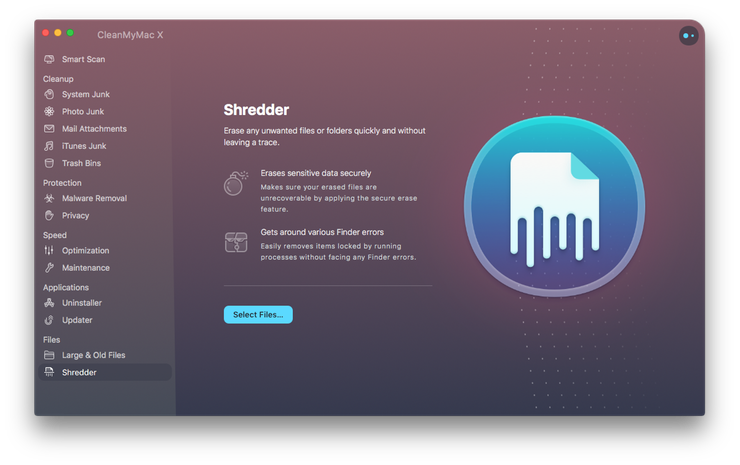
Step 2. Right-click the drive you want to format and select Format Partition from the left action panel.
Step 3. At this page, specify the partition label, file system as well as cluster size. The cluster size is set by default.
Step 4. After resetting these parameters, you can click OK.
Step 5. Click Apply button on the upper left corner to allow the pending operations.
If you need to format USB drive to FAT32/NTFS/exFAT/Ext2/Ext3/Ext4, MiniTool Partition Wizard Free Edition can be your best USB formatter. You can also change your USB format with this tool at ease. Try it now!
Format USB Drive in Mac
If you want to use the USB drive on your Mac computer only, formatting it to be entirely Mac compatible file system is highly recommended, such as HFS+ file system. If you want to use the drive between a Windows and Mac machine, you can format it to FAT32.
You can follow the steps as below to format USB drive to HFS+ or FAT32 in Mac. Here I will format the drive to FAT32 for demonstration.
Step 1. Connect the USB flash drive to your Mac computer.
Step 2. Go to Applications and then click Utilities.
Step 3, Double click Disk Utility to open it.
Step 4. Select your USB flash drive on the sidebar, choose Erase.
Step 5. Name the USB drive, choose the MS-DOS (FAT) for Format, Master Boot Record for Scheme. Then click Erase.
Step 6. When it is finished, your USB drive will be formatted to FAT32 as the file system.
Wrapping Things Up
If you don't know how to choose the best format for USB drive, this article could be a big help. If you don't know how to format USB drive to the best file system, this article can also resolve this issue for you.
If you have a different opinion about the best format for USB drive, please don't hesitate to share it with us. If you need any help formatting USB drive in Windows, you may leave it in the following comment zone. And we will reply you as soon as possible. You may also contact us via [email protected] if you need help.
/File Shredder /How to Format A Flash Drive on Mac
Flash Drive Format For Mac
I just bought a flash drive, and it seems to be working really slowly on my Mac. What should I do?
You need to format your flash drive on Mac to make it compatible with your Mac. We’ll teach you how in this article. Read away!
Here are the tactics you’ll learn about in this post.
Article GuidePart 1. Why Format Your Flash Drive?Part 2. How to Format a Flash Drive on MacPart 3. Use PowerMyMac File Shredder to Delete Files on Your Flash DrivePart 4. Conclusion
Part 1. Why Format Your Flash Drive?
There are various reasons why you have to format your flash drive on Mac. Here are the three common ones:
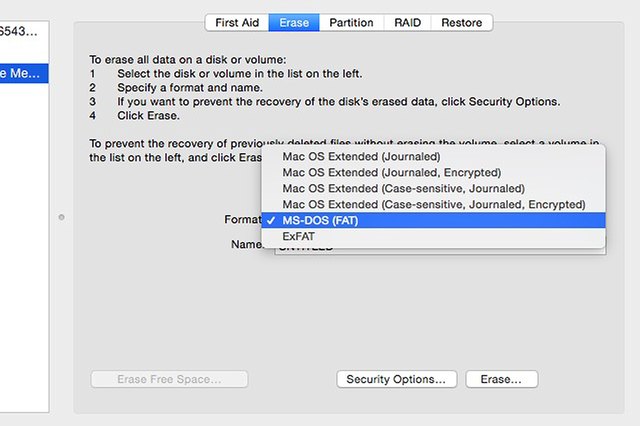
Ensure the flash drive’s full compatibility with Mac. Most flash drives are pre-formatted for use with Windows.
The difference between macOS and Windows is that they make use of different file systems. Mac uses either Mac OS Extended or AFPS as the file system, while Windows usually uses FAT32.
Drives that are formatted as FAT32 can still be used with macOS, but there is a bigger chance that you’ll encounter issues along the way.
Aside from that, Time Machine doesn’t work with drives that are not fully compatible with Mac. Time Machine is a built-in feature of Mac that backs up your files to an external storage device such as your flash drive.
Free up space in your flash drive. USB drives have limited memory space. Sometimes, deleting unnecessary files or transferring a few of them to your PC is enough.
Sometimes, it isn’t. That is when formatting your USB drive becomes the best solution.
Get rid of viruses and other issues. Flash drives are popular for their portability, but they can also carry viruses that can spread to other computers.
Formatting a flash drive on Mac is an easy yet effective way to remove them. Although macOS is generally much safer and more secure than Windows, this doesn’t mean that your Mac can’t be affected by viruses.
Part 2. How to Format a Flash Drive on Mac
Before you proceed with formatting your flash drive, you should first consider which format you are going to use. Selecting the correct format is crucial as it will have an impact on its compatibility with your Mac.
Certain formats work better on specific versions of macOS. The format that you set is something you’ll have to stick with for a long time, so it’s best if you make the right decision from the very start.
Below are the available formats and when best to use them.
APFS. Short for Apple File System, APFS only works with Mac running on High Sierra or later.
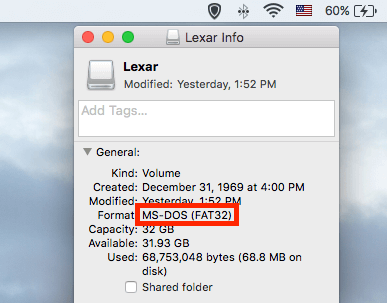
It is optimized for solid state drives (SSD) like flash drives, and this guarantees a faster performance than Mac OS Extended.
If you intend to use your USB drive only with a new Mac, APFS is highly recommended. The downside to it is that it isn’t Time Machine-compatible.
This means you cannot set the flash drive as the destination of your backup.
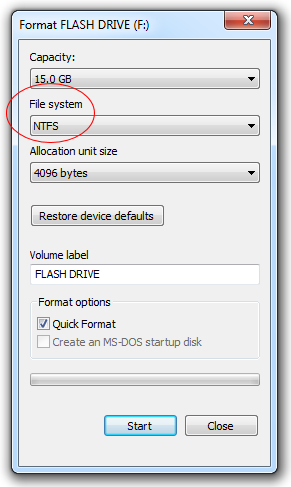
Format Flash Drive For Mac Large Files Download
Mac OS Extended. If your Mac is running on macOS Sierra or below, this format is the way to go. Nevertheless, Mac OS Extended works with High Sierra and up as well.
This would work well if you think you would need to use your drive in an old Mac. It has some catching up to do in terms of speed, though.
On the bright side, you can use your flash drive to create backups via Time Machine.
FAT32. The most versatile in the list, FAT32 will allow you to use your USB drive on Windows as well as a Mac. In fact, it is the most widely compatible file system.
Format Flash Drive Mac Fat32
It works on most video game consoles, media players, and other devices. However, it can only support individual files up to 4GB in size.
We don’t suggest using this format if you plan to store large files like videos.
exFAT. This is closely similar to FAT32 in terms of compatibility. It works on both Windows and macOS too.
However, it is not supported by as many consoles and devices as FAT32. The great thing here is that it doesn’t have a file size limit.
If you want full compatibility with Mac, choose between APFS and Mac OS Extended. If you expect to transfer files between a Windows computer and a Mac, you should decide on either FAT32 or exFAT.
If you are merely freeing up space or getting rid of viruses in your flash drive, simply select the previous format.
Now, have you decided which format would best suit you and your Mac? If you have, refer to our step-by-step guide on how to format a flash drive on Mac.
Step 1: Plug the flash drive into the USB port.
Newer models of MacBook and MacBook Pro only come with USB-C ports. You will need to connect a USB-C adaptor on the port before you can connect your flash drive.
Step 2: Launch a Finder window.
Open a Finder window. You should see your flash drive listed below the Devices section.
Click on it. If you have files in your drive, make sure to transfer them to your Mac or another external storage device. Formatting your flash drive will wipe off all files in it.
Step 3: Run Disk Utility.
Now, go to Applications and select Utilities. Click Disk Utility to open it and press on your flash drive’s name from the sidebar. Click on the Erase tab at the top of the window.
Step 4. Choose a format for your flash drive.
From the drop-down list next to Format, select the format that you want to use for the flash drive. You may also set a name for your drive. Simply enter it in the field beside Name.
Step 5. Format your flash drive.
Click Erase. A dialog box will appear. Hit Erase to confirm and wait for your Mac to complete the formatting.
Part 3. Use PowerMyMac File Shredder to Delete Files on Your Flash Drive
Every time you want to permanently delete files on your USB drive, you don’t have to format it again. You can just use a reliable file shredder to conveniently erase files in a secure way.
PowerMyMac File Shredder does just that. You can use it to delete confidential files on your Mac, external hard drives, and SD cards as well. It comes with a 30-day free trial, so grab the opportunity while it lasts!
Step 1. Download, Launch iMyMac PowerMyMac and Choose File Shredder Option
Download and install the software on your Mac. Launch it once installation is complete. Connect your flash drive to the USB port.
From the left tab of the software, click Toolkit module and select Shredder. Hit Select Files.
Step 2. Choose File to Destroy
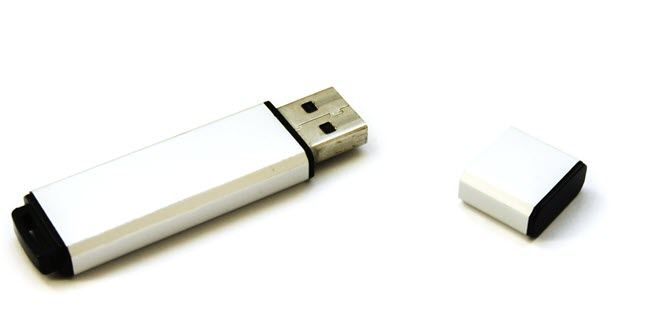
A Finder window will appear. On the sidebar, you will see a list of folders and your connected USB drive. Look for your flash drive below the Devices section and click on it.
Select the files that you want to delete and press Open. If you want to add more files for deletion, simply click on the Add Files button on the upper-left corner of the window.
Step 3. Permanently Shred Private Files
Before you continue, make sure that you’re certain that you wish to delete your files.
Once you have selected all files that you wish to delete, hit Clean.
Format Hard Drive For Mac And Pc
People Also Read:How to Securely Delete Files on MacThe Best Mac File Shredder in 2021
Part 4. Conclusion
Formatting is useful for making the most out of your flash drive. Choosing the format that matches the Mac you’re using as well as your data storage needs are very important.
So is deleting unwanted and confidential files as safely and securely as possible. This is made possible with iMyMac PowerMyMac File Shredder.
You should use it with caution, though. Once files are wiped off by iMyMac PowerMyMac File Shredder, you will no longer be able to recover them!
ExcellentThanks for your rating.
Rating: 4.6 / 5 (based on 66 ratings)
People Also Read:
PowerMyMac
A powerful all-in-one App for Mac
Free DownloadClean up and speed up your Mac with ease
Free Download